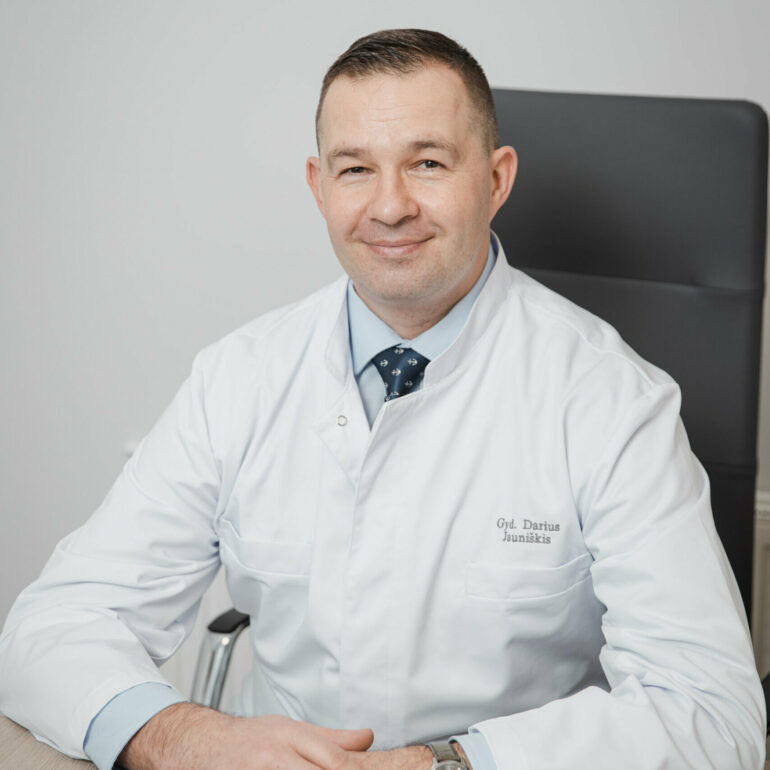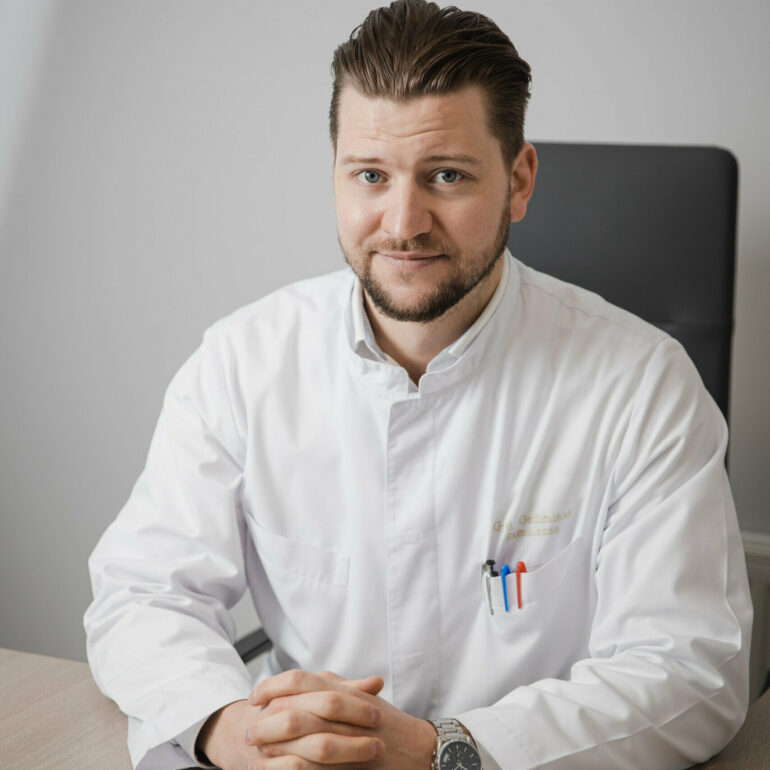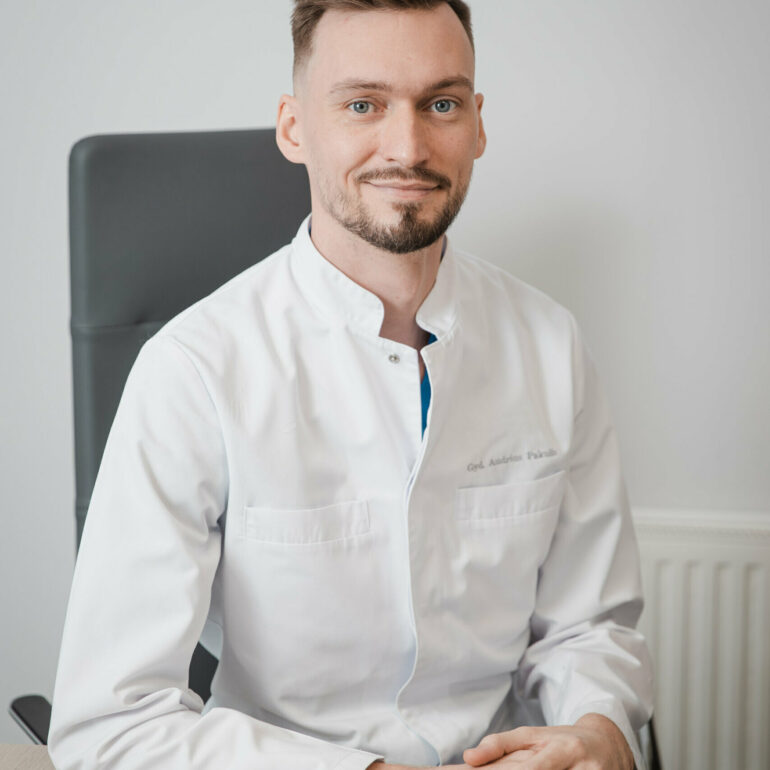Liposuction
Liposuction is a cosmetic procedure used to remove unwanted body fat.
It involves sucking out small areas of fat that are hard to lose through exercise and a healthy diet. It is carried out on areas of the body where deposits of fat tend to collect, such as the buttocks, hips, thighs, and tummy. The aim is to alter body shape, and the results are generally long-lasting, providing you maintain a healthy weight. It works best in people who are a normal weight and in areas where the skin is tight.
NOTE: This solution is not to decrease the level of overweight; instead, it is a treatment that reduces unwanted areas of fat located in different areas of the body. The best results are achieved on younger patients because their skin is often more elastic. You cannot expect to remove cellulites. The objective is to improve the overall shape of the body.
All inclusive services
Furthermore you will receive:
- Free transport to and from the airport in Kaunas. If you choose to arrive at the airport in Vilnius the return price is around £45.
- Free transportation between the hotel and the clinic
- All the necessary medicines, bandages, and antibiotics to use after the surgery
- Blood test, which will be performed before the surgery
- Special, supportive bra and a suit for compression
- Lymphatic drainage treatment (massage)
- The presence of two surgeons at the surgery
- All-inclusive two-day stay at the clinic
Patient Information
Liposuction is usually carried out under general anesthetic, although an epidural anesthetic combined with extra medication may be used for liposuction on lower parts of the body.
The surgeon would mark on your body the area where fat is to be removed. They would then:
- inject this areawith a solution containing anesthetic and medicine, to reduce blood loss, bruising and swelling
- break up the fat cellsusing high-frequency vibrations, a weak laser pulse or a high-pressure water jet
- make a small incision (cut) and insert a suction tubeattached to a vacuum machine (several cuts may need to be made if the area is large)
- move the suction tube back and forthto loosen the fat and suck it out
- drainany excess fluid and blood
- stitch up and bandagethe treated area
This usually takes 1 to 3 hours. Most people need to stay in hospital overnight
After the procedure, you will be fitted with an elasticated support corset or compression bandages. This helps to reduce swelling and bruising and should be worn constantly for several weeks after the operation.
You may need to take antibiotics straight after the procedure to reduce the risk of infection. Most people also take mild non-prescription painkillers to ease any pain and swelling. You will be provided with a compression suit/pants/corset, depending on the surgical area that must be worn 24/7 for up to 8 weeks.
- If you had a general anesthetic, someone would need to drive you home and stay with you for the first 24 hours.
- How long it will be before you are able to return to work will depend on several factors, such as the type of job that you do and how much of your body was treated.
- The same will apply to how long it will be before you are able to drive. You should discuss this with your surgeon.
- The bandage or compression suit/pants/corset can be taken off while you shower.
- You will need to avoid strenuous and or sport related activity for up to 4 to 6 weeks (but walking and general movement should be fine).
- The results of the procedure are not always noticeable until the swelling has gone down. It can take up to 6 months for the area to settle completely.
- After about a week: Stitches would be removed (unless you had dissolvable stitches) by your personal doctor.
- At 4 to 6 weeks: You should be able to resume any contact sports or strenuous activities you would normally do.
It is common after liposuction to have:
- Soreness
- bruising and swelling, which may last up to 6 months
- numbness, which should go away in 6 to 8 weeks
- scars
- inflammationof the treated area, or the veins underneath
- fluidcoming from the cuts
- swollen ankles(if the legs or ankles are treated)
Liposuction can occasionally result in:
- lumpy and uneven results
- bleeding under the skin(hematoma)
- persistent numbnessthat can last for months
- changes in skin colourin the treated area
- a build-up of fluid in the lungs(pulmonary oedema) from the fluid injected into the body
- a blood clot in the lungs(pulmonary embolism)
- damage to internal organsduring the procedure
- permanent disturbance of sensitivity in the surgical area(s).
Any type of operation also carries a small risk of:
- excessive bleeding
- developing a blood clotin a vein
- infection
- an allergic reactionto the anesthetic
Your surgeon will explain how likely these risks and complications are, and how they would be treated if they occurred.
The biggest risk is that the patient is expecting a different result than this method can give. It is vitally important to listen to and talk with your surgeon.
- Liposuction is not a treatment for obesity, and it will not remove cellulite or stretch marks. It is only suitable for people who have tried changing their lifestyle and found this has not helped.
- Pregnant women
- Young women under 18 years of age
- Persons using anti-depression pills because of the increased risk related to this surgery.
Meet our surgeons




First and always, it is all about you
We invite you to contact us at booking@lxkclinic.co.uk or +44 (0) 7522 403 355.
for a free pre-consultation.
